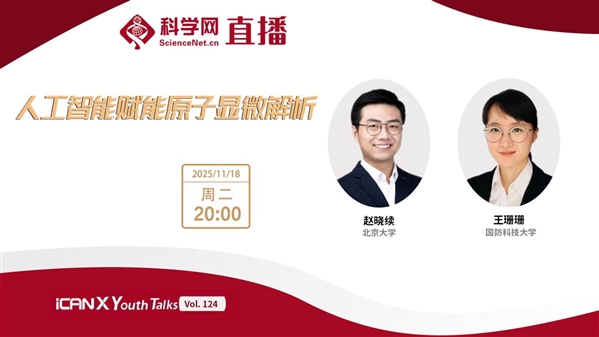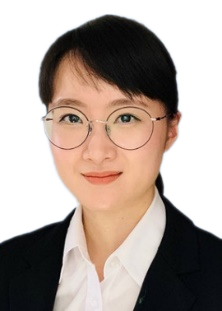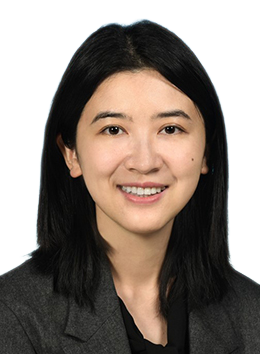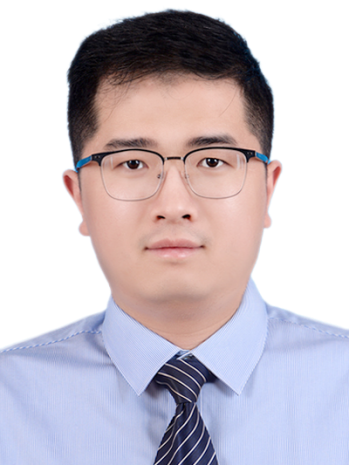|
|
|
|
|
北京大学、国防科技大学两位专家讲述人工智能赋能原子显微解析 |
|
|

直播时间:2025年11月18日(周二)20:00-21:30
直播平台:

科学网APP
https://weibo.com/l/wblive/p/show/1022:2321325234292753563777
(科学网微博直播间链接)

科学网微博

科学网视频号
北京时间11月18日晚八点,iCANX Youth Talks第124期邀请到了北京大学材料科学与工程学院研究员赵晓续,国防科技大学材料科学与工程系副主任王珊珊担任主讲嘉宾,国防科技大学计算机学院副研究员许可乐,北京大学王选计算机研究所研究员周嘉欢担任研讨嘉宾,香港科技大学助理教授朱丹青担任主持人,期待你一起加入这场知识盛宴。
【嘉宾介绍】

赵晓续
北京大学
人工智能视角下的原子分辨电子显微镜学
【Abstract】
Scanning transmission electron microscopy (STEM) provides unparalleled insight into atomic-scale structures, defects, and emergent quantum phenomena in functional materials, yet conventional analysis often suffers from low throughput and limited accuracy. New ideas in the field of deep learning have provided more momentum to harness the wealth of big data and sophisticated information in STEM data analytics, automatic identifying weak signals and complex features in atomic resolution microcopy images with intelligence. In our work, employing cycle generative adversarial networks (CycleGAN) and U-Nets, we propose a method based on a single experimental image to tackle high annotation costs and image noise for defect detection in a library of 2D materials. And similar methods can be extended to identify atomically dispersed single atoms with their height information in a few nanometers resolution. We use a diffusion model to emulate aberration correctors and process conventional TEM images to sub-angstrom resolution. These results illustrate the synergy between AI and STEM, enabling high-throughput, accurate, and intelligent characterization at the atomic scale.
扫描透射电子显微镜(STEM)以超高空间分辨率、以及灵活多变的成像模式,使得其拥有精准解析功能材料的原子结构、电场结构、缺陷态等微观参量。然而,传统STEM图像分析方法存在通量低、精度有限的瓶颈。深度学习为STEM数据分析注入了全新动力,让我们能智能地挖掘海量数据,精准识别原子分辨图像中的微弱信号与复杂特征,从而了解新型功能材料的微观特性。我们的研究工作针对二维材料缺陷检测中标注成本高、噪声干扰大的难题,结合循环生成对抗网络(CycleGAN)与U-Net,提出了仅需单张实验图像的解决方案。该方法还可进一步拓展,用于在纳米级分辨率下识别单原子催化剂的三维分布。此外,我们训练的扩散模型可以处理低分辨率图像,从而跨越昂贵的球差校正器,将常规非原子级分辨图像的分辨率提升至亚埃级别。这些成果展示了人工智能与STEM技术的深度融合,为实现高通量、高精度、全自动化的原子尺度智能化表征奠定了基础。
【BIOGRAPHY】
Asst/Prof. Xiaoxu ZHAO is an Assistant Professor in School of Materials Science & Engineering at Peking University, China. He obtained his B. Eng. (1st Class Honours) from Nanyang Technological University in 2014, and PhD from National University of Singapore in 2018. After graduation, he continued as a Research fellow at National University of Singapore from 2018 to 2020, and joined Nanyang Technological University as a Presidential Postdoc Fellow from 2020 to 2022. His main research interests are using scanning transmission electron microscopy/electron energy loss spectroscopy (STEM/EELS) to understand the atomic and electronic structure of 2D materials, and applying computer vision and machine learning to provide more momentum to harness the wealth of big data and sophisticated information in STEM data analytics. He published over 160 peer reviewed papers including Nature, Nat. Nanotechnol, Nat. Mater, Nat. Syn., etc, with over 15,000 citations, h-index 67. He was named in the MIT Technology Review TR35 (Asia-Pacific) 2022, Forbes China· 100 Youth Returnee Elite 2022, and Beijing Distinguished Young Scholars 2024.
赵晓续是北京大学材料科学与工程学院研究员,博士生导师,国家级青年人才,北京市杰青,国家重点研发计划青年首席科学家。赵晓续研究员于2014年获南洋理工大学一等荣誉学士学位,2018年获新加坡国立大学博士学位,2022年加入北京大学。赵晓续研究员的主要研究兴趣是使用高空间以及高能量分辨的球差校正扫描透射电子显微镜/电子能量损失谱,在亚原子尺度解析和构筑低维量子材料,建立原子拓扑结构与物性之间的关联,并结合机器学习方法实现对原子尺度电镜照片的智能清洗、分类与分析等,目前已在Nature, Nat. Nanotechnol., Nat. Mater., Nat. Syn., Nat. Commun.,等顶级期刊发表论文160余篇,引用超过15,000次,h-index 67。赵晓续研究员于2018年获国家优秀自费留学生奖,2020年南洋理工大学Presidential Postdoctoral Fellowship, 2022年入选《福布斯中国·青年海归菁英·100 人》以及《麻省理工科技评论》2022 年度亚太区“35 岁以下科技创新 35 人”等荣誉称号。主持国家重点研发计划青年科学家项目、国家重点研发计划政府间联合研发项目、国家自然科学基金面上、重大项目子课题、创新群体B骨干等多个项目。

王珊珊
国防科技大学
机器学习赋能的材料原子尺度显微结构解析
【ABSTRACT】
The atomic structure of a material (such as vacancies, grain boundaries, phases, stacking faults, etc.) significantly affects its electrical, optical, mechanical, and catalytic properties, thus is key to understanding the transfer law of material microstructure to macroscopic properties. Transmission electron microscopy (TEM) is an important means to characterize the atomic scale structure of materials. However, manual analysis of microscopic images has limitations such as intensive labor work, heavy time consumption, low analytical precision, sensitivity to image quality, and difficulty in obtaining statistical conclusions. Therefore, it is urgent to develop automatic microscopic image recognition and analysis methods. This report will introduce (1) the use of graph neural networks to accurately identify defects with diverse structures and random large-scale lattice distortion, and (2) using the disentangled representation learning method (a generative model), to generate a large corpus of annotated simulation data that closely resembles experimental conditions. A structural inference model is then trained via a residual neural network which can directly deduce the interlayer slip and rotation of diversified and complicated stacking patterns at van der Waals interfaces with picometer-scale accuracy across various materials with different layer numbers, and (3) integrateing ML-driven defect discovery with material synthesis, theoretical calculations and electrochemical experiments to realize a rapid establishment of synthesis-structure-property-performance relationships in defective catalysts, displaying how ML and researchers seamlessly cooperate in a scientific workflow.
材料的原子级结构(如空位、晶界、相态、层错等)显著影响其电学、光学、力学、催化等性能,也是理解材料微观结构向宏观性质传递规律的关键环节。透射电子显微术是表征材料原子尺度结构信息的重要手段。然而,人工分析显微图像存在耗时长、精度低、门槛高、对图片质量敏感、难以获得统计学结论等局限。因此,亟需开发高精度、高效率、高鲁棒、自动化的显微图像识别与分析方法。本报告将介绍(1)利用等变图神经网络,对结构多样、且存在随机大尺度晶格畸变缺陷的精准识别;(2)利用解耦表征学习的生成式模型,构建显微图像高质量数据库,进而实现对二维范德华界面复杂层错(包括滑移堆垛和扭角堆垛花样)原子级结构的解析;(3)将机器学习驱动的缺陷智能发掘与材料制备、性质预测和性能验证相结合,形成人机协作的新型催化剂研发闭环。
【BIOGRAPHY】
Shanshan Wang, Professor, PhD supervisor, Deputy Director of Materials Science and Engineering Department, Executive Director of Materials Intelligence R&D Center, National University of Defense Technology; Assistant Dean of School of Advanced Materials, Peking University Shenzhen Graduate School (concurrently). Shanshan Wang is focusing on developing new methods and tools for controllable preparation and intelligent characterization of low-dimensional materials using machine learning algorithms and automation technology. As the first/corresponding author, she has published more than 30 papers in Nature Communications, Advanced Materials, Chem, Matter, Chemical Society Reviews, National Science Open and other journals. She has won the National Outstanding Youth Science Foundation, the Outstanding Youth Science Foundation of Hunan Province, Young Scientist award of the European Congress of Microscopy, and was selected by China Association for Science and Technology (CAST) for the ‘Young Talent Support’ program. She also serves on the Young Editorial Board of SmartMat and National Science Open.
王珊珊,国防科技大学长聘研究员、博导、材料科学与工程系副主任。专注于运用人工智能与自动化技术,开发材料原子尺度的缺陷智能化表征与可控制备的新方法、新工具。以第一/通讯作者在Nature Communications、Advanced Materials、Chem、Matter等期刊发表论文40篇。主持国家自然科学基金委青年科学基金项目(B类)、湖南省自然科学基金委青年科学基金项目(B类)、湖南省重大基础研究项目;获欧洲显微学大会“青年科学家”奖、入选中国科协“青年人才托举”工程;担任SmartMat、《国家科学进展》青年编委。《国家科学进展》青年编委。
【主持人】

朱丹青
香港科技大学
【研讨嘉宾】

许可乐
国防科技大学

周嘉欢
北京大学
特别声明:本文转载仅仅是出于传播信息的需要,并不意味着代表本网站观点或证实其内容的真实性;如其他媒体、网站或个人从本网站转载使用,须保留本网站注明的“来源”,并自负版权等法律责任;作者如果不希望被转载或者联系转载稿费等事宜,请与我们接洽。